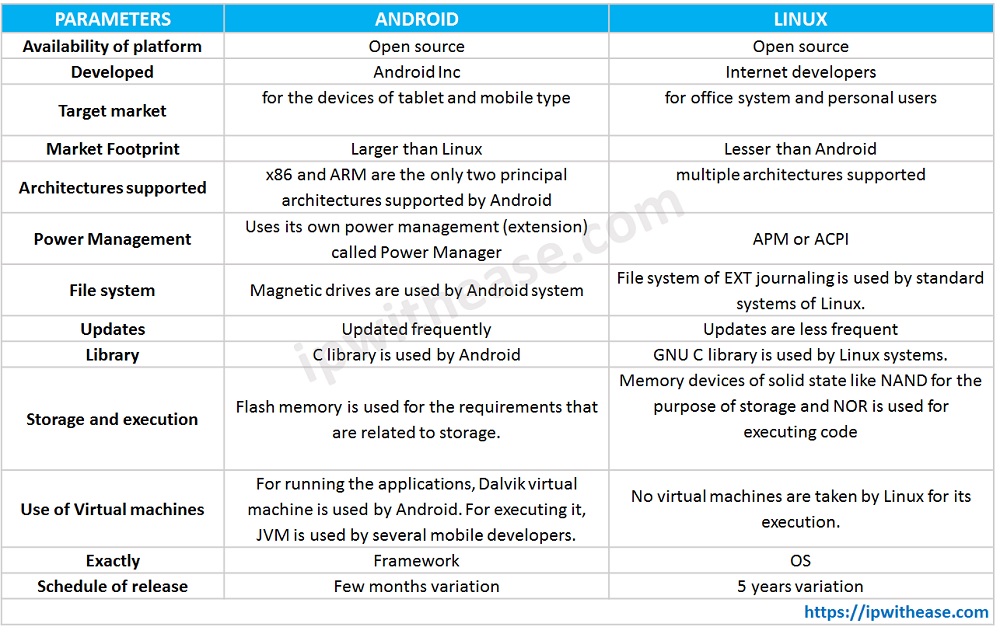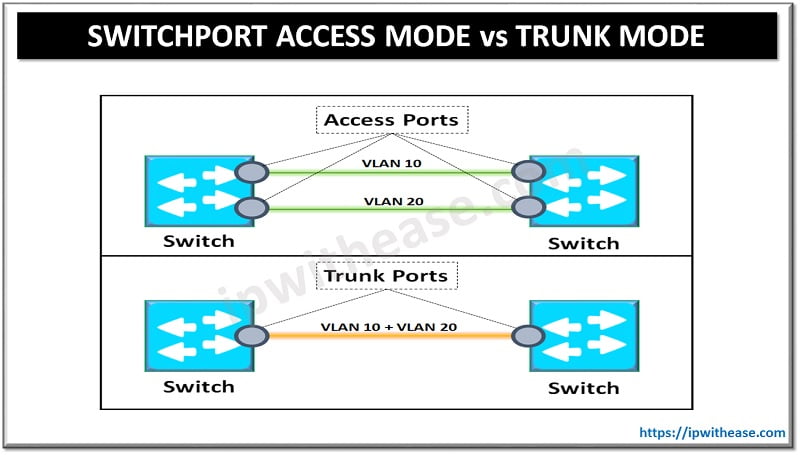Android and Linux –
Android and Linux – are considered by most of the people as operating systems like Android OS are for the mobiles while Linux OS is for the server and Desktop.
In precise terms in Android vs Linux, Linux kernel stands as the OS that is most popular while the framework known as Android is the one developed on Linux kernel top.
So Linux kernel is also run by all the android devices but Android is not there in every Linux device. Hence, the basis on which development of Android takes place is termed as Linux kernel.
Also, there are several devices on which Android runs along with mobiles such as Camera, TV, Cars and Watch etc.
Linux:
Basically, Linux stands as UNIX’s derived version. It is the setup that is community-based and runs athwart several systems. Execution of the operating system takes place itself in this monolithic OS from the kernel.
The comparison of Linux is often done with the profitable Unix systems but in comparison to the systems that are desktop-oriented, it serves to be more reliable.
Linux systems have the following properties:
- Stable OS
- Can be downloaded easily
- Open-source
- Built by internet developers group
- Installation can be easily done
The networking service is firmed as prior stuff by the Linux developers when they have joined the market of Desktop. Database support and trade services are also provided by Linux for organizations such as US post office, Amazon etc.
Linux has especially become popular among Internet service providers as web and proxy server, firewall etc.
Also, every administrator of UNIX system appreciating the management station that is comfortable has a Linux box in reach.
Related – Linux vs Unix
Android:
Execution of Android takes place on virtual machines, it makes use of Java and is primarily focused on satisfying the devices that are low powered.
Updates take place frequently in the systems of Android OS and each of the releases is linked with a new name.
Related – Android vs IOS
Following are Android OS common features:
- Main suitability of hardware reference is for the mobile devices
- An open platform for mobile development
- UI and application framework involved
- The system is powered using Linux 2.6
The development of open-source Android OS is predominantly for tablets and mobiles. In this, the top layer is the application layer that holds own libraries set and C/C++ languages are used for the development of these languages.
Android vs Linux:
These are some points on the difference between Android and Linux –
- Development of Linux is primarily for office system and personal users while that of Android is for the devices of tablet and mobile type.
- In Android vs Linux, when Android compared with Linux, the footprint held by Android is larger.
- While Linux usually offers support to multiple architectures, x86 and ARM are the only two principal architectures supported by Android. While the main target of Android-x86 is the devices of mobile internet, the predominance of the ARM platform is on mobile phones. These two OS has this functionality as the fundamental difference between them.
- APM or ACPI is used for achieving power management in Linux. Android majorly depends on its module of power management (extension) called Power Manager
- In Linux vs Android magnetic drives are used by the Android system while the file system of EXT journaling is used by standard systems of Linux.
- Embedded devices use memory devices of solid-state like NAND for the purpose of storage and NOR for executing code. On the other hand, flash memory is used by android systems for the requirements that are related to storage.
- In Android vs Linux, Android uses C library while GNU C library is used by Linux systems.
- For running the applications, the Dalvik virtual machine is used by Android. For executing it, JVM is used by several mobile developers. On the other hand, no virtual machines are taken by Linux for its execution.
Conclusion:
In Android vs Linux OS, Tablet, mobile devices use the open-source OS known as Android that runs on the top of the distribution of Linux kernel. In contrast, Linux stands as the legacy OS that is highly suitable for the system and desktop users.
Detailed Comparison table of Android vs Linux:
| PARAMETER | ANDROID | LINUX |
|---|---|---|
| Availability of platform | Open source | Open source |
| Developed | Android Inc | Internet developers |
| Target market | for the devices of tablet and mobile type | for office system and personal users |
| Market Footprint | Larger than Linux | Lesser than Android |
| Architectures supported | x86 and ARM are the only two principal architectures supported by Android | multiple architectures supported |
| Power Management | Uses its own power management (extension) called Power Manager | APM or ACPI |
| File system | Magnetic drives are used by Android system | File system of EXT journaling is used by standard systems of Linux. |
| Updates | Updated frequently | Updates are less frequent |
| Library | C library is used by Android | GNU C library is used by Linux systems |
| Storage and execution | Flash memory is used for the requirements that are related to storage. | Memory devices of solid state like NAND for the purpose of storage and NOR is used for executing code |
| Use of Virtual machines | For running the applications, Dalvik virtual machine is used by Android. For executing it, JVM is used by several mobile developers. | No virtual machines are taken by Linux for its execution. |
| Exactly | Framework | OS |
| Schedule of release | Few months variation | 5 years variation |
![]()
Download the difference table here.
ABOUT THE AUTHOR

I am here to share my knowledge and experience in the field of networking with the goal being – “The more you share, the more you learn.”
I am a biotechnologist by qualification and a Network Enthusiast by interest. I developed interest in networking being in the company of a passionate Network Professional, my husband.
I am a strong believer of the fact that “learning is a constant process of discovering yourself.”
– Rashmi Bhardwaj (Author/Editor)




